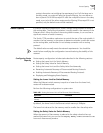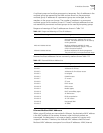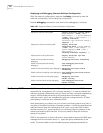
6
MULTICAST PROTOCOL
This chapter includes information on the following:
■ IP Multicast Overview
■ Configuring Common Multicast
■ Configuring IGMP
■ IGMP Snooping
■ Configuring PIM-DM
■ Configuring PIM-SM
■ GMRP
IP Multicast Overview Many transmission methods can be used when the destination (including data,
voice and video) is the secondary use of the network. If the multicast method is
used you should establish an independent data transmission path for each user.
The broadcast method can be used if you intend to send the information to all
users on the network. In either case, the end users will receive the information. For
example, if the same information is required by 200 users on the network, the
traditional solution is to send the information 200 times in unicast mode. In the
broadcast mode, the data is broadcast over the entire network. However, both of
the methods waste bandwidth resources. In addition, the broadcast mode cannot
ensure information security.
IP multicast technology solves this problem. The multicast source sends the
information only once. Multicast routing protocols establish tree-type routing for
multicast packets (see
Figure 26) so that information can be correctly sent, with
high efficiency, to each user.


















